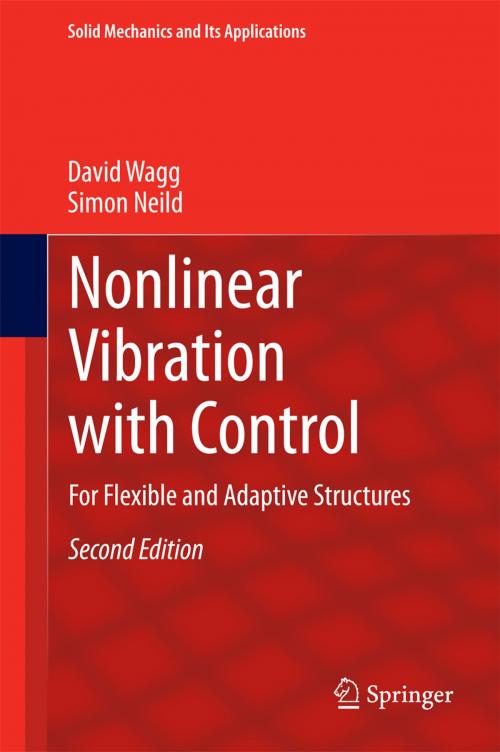Nonlinear Vibration with Control
For Flexible and Adaptive Structures
Nonfiction, Science & Nature, Science, Other Sciences, System Theory, Technology, Engineering, Mechanical| Author: | David Wagg, Simon Neild | ISBN: | 9783319106441 |
| Publisher: | Springer International Publishing | Publication: | November 3, 2014 |
| Imprint: | Springer | Language: | English |
| Author: | David Wagg, Simon Neild |
| ISBN: | 9783319106441 |
| Publisher: | Springer International Publishing |
| Publication: | November 3, 2014 |
| Imprint: | Springer |
| Language: | English |
This book provides a comprehensive discussion of nonlinear multi-modal structural vibration problems, and shows how vibration suppression can be applied to such systems by considering a sample set of relevant control techniques. It covers the basic principles of nonlinear vibrations that occur in flexible and/or adaptive structures, with an emphasis on engineering analysis and relevant control techniques.
Understanding nonlinear vibrations is becoming increasingly important in a range of engineering applications, particularly in the design of flexible structures such as aircraft, satellites, bridges, and sports stadia. There is an increasing trend towards lighter structures, with increased slenderness, often made of new composite materials and requiring some form of deployment and/or active vibration control. There are also applications in the areas of robotics, mechatronics, micro electrical mechanical systems, non-destructive testing and related disciplines such as structural health monitoring. Two broader themes cut across these application areas: (i) vibration suppression – or active damping – and, (ii) adaptive structures and machines.
In this expanded 2nd edition, revisions include:
- An additional section on passive vibration control, including nonlinear vibration mounts.
- A more in-depth description of semi-active control, including switching and continuous schemes for dampers and other semi-active systems.
- A complet
e reworking of normal form analysis, which now includes new material on internal resonance, bifurcation of backbone curves and stability analysis of forced responses.
Further analysis of the nonlinear dynamics of cables including internal resonance leading to whirling.
Additional material on the vibration of systems with impact friction.
The book is accessible to practitioners in the areas of application, as well as students and researchers working on related topics. In particular, the aim is to introduce the key concepts of nonlinear vibration to readers who have an understanding of linear vibration and/or linear control, but no specialist knowledge in nonlinear dynamics or nonlinear control.
This book provides a comprehensive discussion of nonlinear multi-modal structural vibration problems, and shows how vibration suppression can be applied to such systems by considering a sample set of relevant control techniques. It covers the basic principles of nonlinear vibrations that occur in flexible and/or adaptive structures, with an emphasis on engineering analysis and relevant control techniques.
Understanding nonlinear vibrations is becoming increasingly important in a range of engineering applications, particularly in the design of flexible structures such as aircraft, satellites, bridges, and sports stadia. There is an increasing trend towards lighter structures, with increased slenderness, often made of new composite materials and requiring some form of deployment and/or active vibration control. There are also applications in the areas of robotics, mechatronics, micro electrical mechanical systems, non-destructive testing and related disciplines such as structural health monitoring. Two broader themes cut across these application areas: (i) vibration suppression – or active damping – and, (ii) adaptive structures and machines.
In this expanded 2nd edition, revisions include:
- An additional section on passive vibration control, including nonlinear vibration mounts.
- A more in-depth description of semi-active control, including switching and continuous schemes for dampers and other semi-active systems.
- A complet
e reworking of normal form analysis, which now includes new material on internal resonance, bifurcation of backbone curves and stability analysis of forced responses.
Further analysis of the nonlinear dynamics of cables including internal resonance leading to whirling.
Additional material on the vibration of systems with impact friction.
The book is accessible to practitioners in the areas of application, as well as students and researchers working on related topics. In particular, the aim is to introduce the key concepts of nonlinear vibration to readers who have an understanding of linear vibration and/or linear control, but no specialist knowledge in nonlinear dynamics or nonlinear control.















